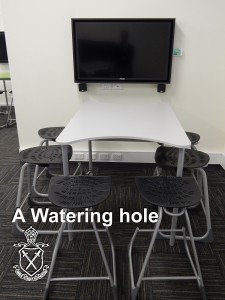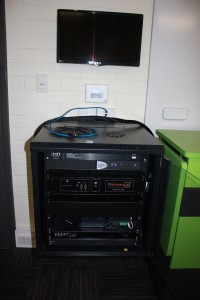As an Audio Visual systems company, you might wonder what our Director, Sam Garden, was doing spending a few days at a conference focused solely on Flip Learning?
The answer is simple.
Education is changing and moving fast and as a provider of key communication tools to our schools and their teachers, we saw it as imperative that we have some understanding of how teachers teach and what changes are coming now and in the future.
With this in mind, Sam has been curiously watching this trend of Flip learning, which he first observed in a big way a few years ago at a BETT conference in London. As he has looked into this concept of the flipped classroom, where you bring the hard work from home back into the classroom and leaving the simple work for at home, it struck him as both very simple and logical in regards to its benefits in many scenarios.
As he spent a couple of days with the founders of the flipped classroom, John Bergmenn and Aaron Sams, he learnt more and could see the power in this simple approach.
One key takeaway from the conference for Sam was that the flipped classroom model included creating more time in class for active learning; be it individually or in groups, which allows more time for one on one between teachers and students. Even classes that complete their flip pre-work within class time seem to benefit, by the mere fact that students can move through this basic work at their own pace. To many educators, these positive factors about Flip Learning make sense.
At DIB, our objective has always been to build systems that are not only super-simple and effective, but which will also endure and last from a functionality point of view… With this in mind, 6-10 years is our goal for any given system, installed to a high standard at the outset.
The following are Sam’s thoughts in relation to flip learning and it’s impact on Audio Visual systems and classroom design…
Although I’m not a teacher, I am a lifelong-learner and from my view of the education world, I can see the benefits that this model can bring. I think the resulting influences on design that might come from the Flipped Classroom model include:
a) Pod screen spaces – because flip learning facilitates more time in class for students to work on application of their learning and because the benefits of group collaboration and problem solving. In doing this, coupled with the growing trend towards 1:1 device ratios with students, I foresee a greater demand for flexible learning spaces that incorporate POD screens (typically 32-42″) setup for group work sessions.
b) Large, clear and simple AV presentation solutions – this may already be a given, but is only enhanced further with the amazing software tools that are being used alongside flip learning. Teachers in their facilitator of learning role, still need a big, bright and sharp display that they can very easily connect to and share content from their chosen device with their class. The frequency of simple AV problems in classrooms (connection problems, screen to small or image quality too poor) is still too high.
c) Lesson capture – although general capture of whole lessons goes completely against the successful working elements of the flip classroom (short personable video’s often less than 5 min and 10 min max) there will be an increased interest in recording some lessons more fully and making them available. As flip learning continues to assist great outcomes in teaching, the spillover effect will be an increased acceptance and use of video without the current reservations. Specialist classes and presentations will increasingly want to be recorded and made available for later use or even for dissecting for use as part of later flip lessons.
d) Flip recording spaces – initially I thought that flip learning could be assisted through the creation of dedicated flipped lesson recording spaces. These being custom AV spaces designed to make the creation of flip lessons super simple and allow teachers to integrate simple computer devices, real word 3D demonstrations, team teaching or chats and or whiteboard presentations. We have even designed such spaces that allow simple one button switching between these viewing modes and recording direct to USB memory stick of sharing by the teacher later. There may still be some requirement for these spaces, but on the whole this is not needed for a successful update of flip teaching and in most instances, would be a diversion of both attention and resources.
All in all, FlipCon 2015 was a great conference with many great people and lots of new ideas exchanged.
For assistance with your custom AV requirements or more information about flip learning and AV, please contact a DIB Solutions Consultant on Phone (03) 9457-4800 or contact us



